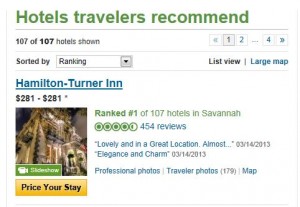By Melanie Lawson
My running shoes have seen better days. Since the weather is warming up I decided it was time to buy new running shoes. Yesterday, I had a few minutes before I had to leave for work so decided to log on to Zappos.com and see what I could find.
I’m a Nike brand loyalist and have almost always bought Nike running shoes. So I began my search typing in “Nike running shoes.” I sorted quickly by clicking “Most Popular”, picked my size, and instantly had a shorter list of options to choose from. I clicked on one or two shoes, read a few reviews, and then watched a product video where an average person (not the company) had a conversation with me the benefits of the shoe. After viewing two different shoes, the third one went into my shopping cart and with a click of the mouse I was done and off to work. In less than ten minutes, I had ordered new running shoes, and thanks to Zappos’s wonderful customer service, my shoes arrived this afternoon.
In today’s busy world, everyone is on the go and needs technology to keep up. Customer reviews make online shopping fast an easy. As Antony Young points out in Brand media strategy, “Opinions of friends and family, and even those of strangers, carry more weight than company provided information,” (p. 95). We trust customer reviews to make our purchase. A complete stranger telling me whether the product fits true to size and is worthy of five stars is priceless. Websites even adjust their format to allow consumers to quickly sort by the top rated products. Consumers can read top reviews, watch a video demonstration from the girl next door, make a selection, and be on their way within a few minutes. Here’s the sample video:
http://www.zappos.com/nike-free-run-3-polarized-pink-sport-grey-summit-white-reflective-silver
Additionally, if consumer reviews aren’t enough and more information is needed, the consumer can quickly post to Facebook or Twitter and ask their friends for product reviews or feedback. Consumers are always looking for the opinions and reviews of others before finalizing their purchase.
Young (2010) mentions other websites that have embraced this concept and used it to their advantage, such as Trip Advisor. The website’s success is based on consumer’s providing reviews and feedback on locations they’ve stayed at during a vacation. Consumers trust this information more than they trust the company’s advertising and will use these types of sites to book their vacations.
Now that we know we all appreciate and use customer feedback and star ratings to make our purchases, I have one question: do you leave feedback? I have never left a product review online, but I use them to shop for everything from shoes to hotel rooms. Now that I’ve written this post and communicated the importance of customer reviews, I feel obligated to write product reviews after purchasing a product…and you should too. Make future customer’s shopping experiences easier, leave feedback.
Did you find this post helpful?
References
Nike Free Run +3. (2013). Retrieved from http://www.zappos.com/nike-free-run-3-polarized-pink-sport-grey-summit-white-reflective-silver
Young, A. (2010). Brand media strategy: Integrated communications planning in the digital era. New York: Palgrave Macmillan.



7 Responses to I Know What I Like…But I Like It More After People Tell Me They Like It Too.